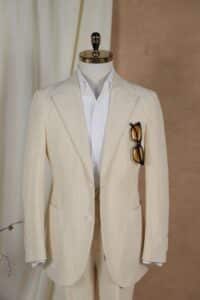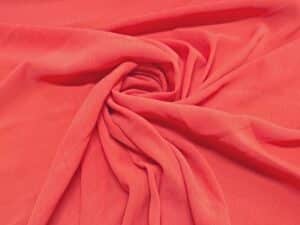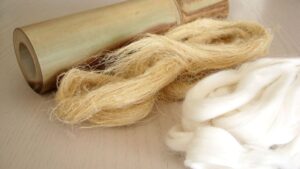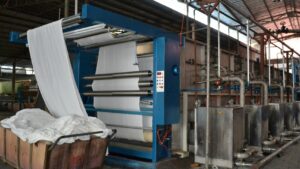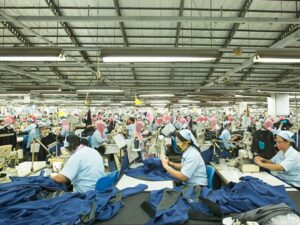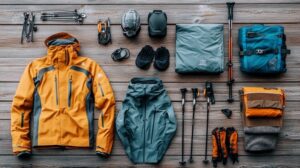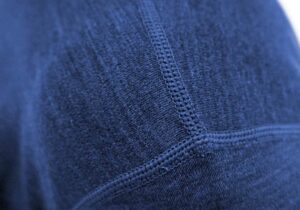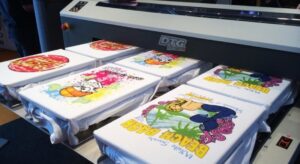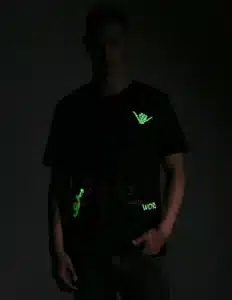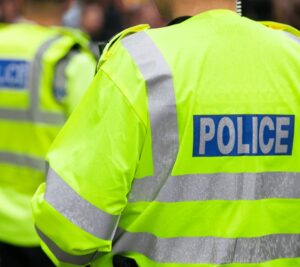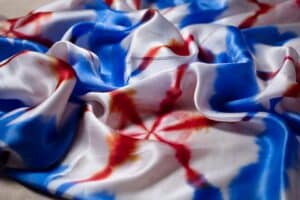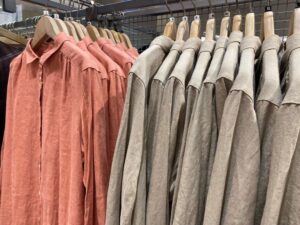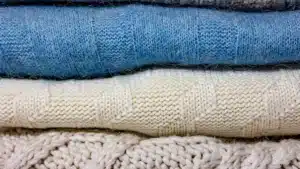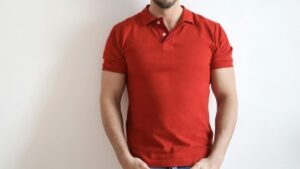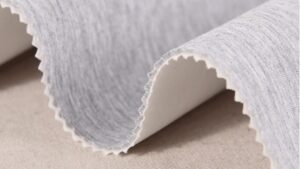
If you’ve ever wondered how your clothes stay strong after many washes, overlock stitches are the answer. These stitches stop fabric edges from unraveling and make clothes look neat. They are very important in making clothes because they make them last longer and speed up the process.
Overlock stitches are super efficient. A higher stitch density, like 5 stitches per centimeter, uses about 38% more thread. This makes seams stronger and clothes more durable. Overlock stitches are a must for making clothes that look good and last a long time.
Key Takeaways
Overlock stitches stop fabric edges from unraveling. Clothes stay neat and last longer.
Overlock sewing machines work fast. They save time and cut labor costs.
Overlock stitches can be used on many fabrics, like stretchy or thick ones.
These stitches make strong seams that keep fabric together, especially in stretchy clothes like T-shirts.
Taking care of overlock machines helps them work well and make good-quality stitches.
Understanding Overlock Stitches
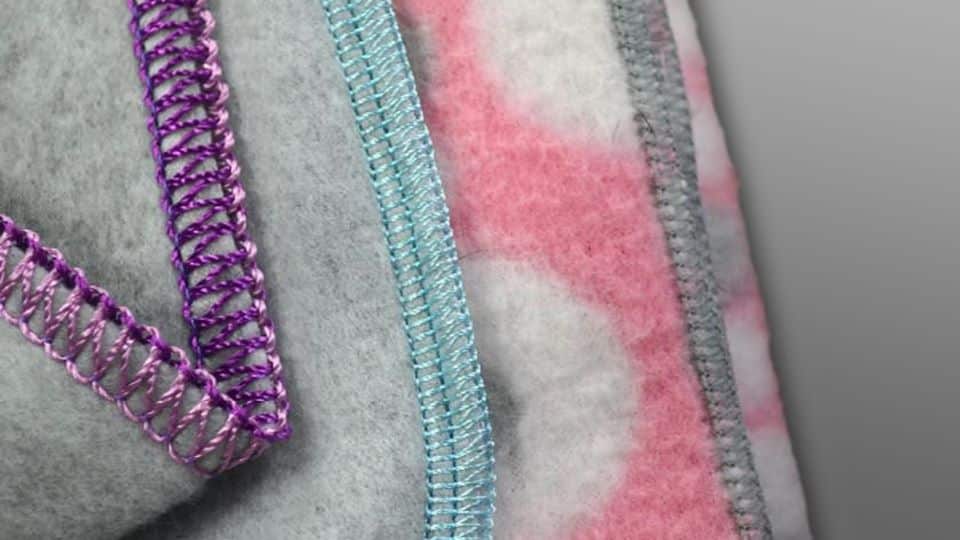
What Is an Overlock Stitch?
An overlock stitch is a sewing method that wraps thread around fabric edges. This creates a neat and strong finish, stopping the fabric from fraying. It helps clothes last longer by securing raw edges. Unlike regular stitches, overlock stitches use several threads and needles. This makes the seams stronger and able to handle wear.
You can see these stitches inside your clothes, where fabric edges are neatly finished. Overlock stitches are made with a special machine called an overlocker. These machines sew, trim, and finish fabric edges all at once. This saves both time and effort.
There are various types of overlock stitches for different uses. For example:
Description | Uses |
|---|---|
Two-thread Overlock | Best for neat edges, like in pants. |
Three-thread Overlock | Great for finishing edges on stretchy fabrics. |
Four-thread Overlock | Works well for light fabrics like shirts. |
Five-thread Safety Stitch | Used for shirt side seams, giving strong edges. |
These stitch types make overlock stitches useful for many fabrics, from soft knits to heavy materials.
The Purpose of Overlock Stitches
Overlock stitches are very important in making clothes. They stop fabric from fraying, which keeps clothes looking good and lasting longer. By securing raw edges, these stitches help clothes stay strong after many washes. They also give clothes a clean and professional look.
But there’s more. Overlock stitches create strong seams that hold fabric pieces together. This is especially helpful for stretchy fabrics like knits, which need to be both flexible and durable. Whether you’re making a T-shirt or a fancy dress, overlock stitches add strength and a polished finish.
As people want better-quality clothes, overlock stitches have become even more important. New overlock machines help make clothes faster and better. This has led to more overlock machines being used in factories. They are needed for neat edges, hems, and seams.
How Overlock Stitches Work
Overlock stitches use multiple threads to wrap around fabric edges. An overlocker trims the fabric edge while sewing, creating a neat finish in one step. This saves time and keeps fabric edges secure and aligned.
Here’s how it works: The machine uses needles and loopers to lock threads together. This forms a stitch pattern that binds the fabric edges. Depending on the stitch type, the machine may use two to five threads. For example, three-thread stitches are good for finishing edges, while five-thread stitches make seams stronger.
In factories, overlock machines are built for speed and efficiency. They handle large amounts of fabric quickly. Digital tools also reduce downtime and improve production speed. Overlock stitches are perfect for balancing speed, quality, and cost.
Using an overlocker gives professional results without much effort. Whether sewing at home or in a factory, overlock stitches make sewing faster, easier, and more reliable.
Benefits of Using an Overlock Sewing Machine

Speed and Efficiency in Production
Want to sew faster? An overlock sewing machine can help. These machines are built for speed, making them great for big projects or quick fixes.
These numbers show how overlockers improve efficiency. Whether you’re sewing at home or in a factory, these machines save time without lowering quality.
Professional and Polished Finish
Ever wonder why store-bought clothes look so neat? It’s because of overlock stitches. These machines sew, trim, and wrap fabric edges in thread. This keeps clothes from fraying and gives them a clean, professional look.
Versatility Across Fabrics and Designs
Overlockers are super versatile. They work on many fabrics, from stretchy knits to thick materials. They’re also great for fancy designs, making them popular in fashion.
Modern overlock machines have advanced features like easy-to-use controls. They offer different stitch modes, like three-thread or four-thread options, to match your fabric and design needs. Here’s why they’re so flexible:
They sew delicate designs with precision and consistency.
They finish raw edges and join fabrics quickly.
They handle thin and thick fabrics with ease.
Whether you’re sewing a stretchy shirt or heavy curtains, an overlocker can do it all. It’s perfect for anyone who loves trying new fabrics and designs.
Applications of Overlock Stitches in Manufacturing

Seaming and Joining Edges
Overlock stitches are great for joining fabric edges. They are strong and flexible, making them popular with manufacturers. An overlocker sews seams and finishes edges in one step. This saves time and stops fabric from fraying after many washes.
For example, three-thread overlock stitches are good for finishing raw edges. They work well on woven fabrics like cotton or silk, which often fray. Knit fabrics also benefit because overlock stitches stretch and stay durable. This keeps seams strong while letting the fabric move easily.
Did you know? Overlock stitches combine steps, making production faster. This is why they’re perfect for large-scale manufacturing.
Hemming for Clean Finishes
Overlock stitches are excellent for hemming clothes. They trim fabric edges and wrap them in thread, creating neat hems. These hems are durable and look polished.
Stretchy fabrics especially benefit from overlock hems. The stitches stretch with the fabric, stopping hems from puckering or breaking. That’s why activewear and T-shirts often use overlock hems. The process is quick, making it popular for home sewing and factories.
Pro Tip: Use four-thread overlock stitches for lightweight fabrics like shirts. They create strong, professional-looking hems.
Decorative Stitching Techniques
Overlock machines can also make decorative stitches. These stitches add style to clothes while keeping edges neat. For example, decorative overlock stitches work well on stretchy fabrics. They stretch with the material and stay strong.
These stitches are great for bold designs. You can use colorful threads to make unique edges on scarves or kids’ clothes. Overlock machines let you try different patterns and colors for creative designs.
Studies show overlock machines are great for decorative stitching. They make designs look good and last longer. Whether sewing for fun or business, decorative overlock stitches improve your projects.
Comparing Overlock Stitches to Other Methods
Overlock vs. Zigzag Stitches
Ever wonder how overlock stitches compare to zigzag stitches? Zigzag stitches are good for finishing edges on light fabrics. However, they don’t last as long or look as neat. Overlock stitches wrap threads around edges, making seams stronger and stopping fraying. Zigzag stitches only loop back and forth, leaving edges exposed.
Overlock stitches are also quicker. An overlocker trims and sews in one step. With zigzag stitches, you must cut and finish edges separately. For stretchy fabrics like knits, overlock stitches are better. They stretch with the fabric and stay strong. Zigzag stitches can break under pressure. For professional sewing, overlock stitches are the best choice.
Advantages Over Straight Stitches
Straight stitches are easy to use but not great for edges. Overlock stitches secure edges and give a clean, polished look. Straight stitches can unravel, especially on woven fabrics. Overlock stitches lock threads tightly, preventing this.
Here’s why overlock stitches are better:
Durability: Studies show combining overlock and chain stitches makes seams stronger.
Efficiency: Overlock stitches save time by trimming and finishing edges at once. Straight stitches need extra steps to do the same job.
If you want strong seams and neat edges, overlock stitches are the way to go.
Choosing Overlock for Specific Projects
Overlock stitches aren’t just for basic sewing. They’re great for special projects too. Stretchy fabrics like spandex work well with overlock stitches because they stretch without breaking. Heavy fabrics like denim also benefit, as overlock stitches create strong seams that last.
How to Use an Overlock Machine
Setting Up an Overlocker
Setting up an overlocker may seem hard, but it’s simple. Place the machine on a sturdy table with good lighting. Plug in the power cord and keep the foot pedal nearby. Check your machine’s threading guide for instructions. Threading might feel tricky, but color-coded paths make it easier. Follow these paths carefully for smooth sewing.
Adjust the tension settings based on your fabric type. For stretchy fabrics, use lower tension for neat edges. Test your settings on scrap fabric to avoid mistakes. Make sure to use the right needles for your project. Overlockers need special needles, so check your manual for details.
Pro Tip: Use a small brush to clean lint during setup. This keeps seams looking neat and professional.
Tips for Beginners
New to overlock machines? Don’t worry! Practice on scrap fabric to get used to the machine. Focus on making stretchy seams and neat edges. Threading can be tricky, so follow the guide step by step. Watching videos can also help you learn faster.
Choose an overlocker with beginner-friendly features like automatic tension adjustment. This makes sewing easier. Mistakes are normal, so don’t be afraid to try new fabrics and techniques. Experimenting helps you improve.
Maintenance and Troubleshooting
Take care of your overlocker to keep it running well. Clean it often to remove lint and dust, especially after sewing stretchy fabrics. Use a soft brush or compressed air to clean tight spaces. Oil the machine as the manual suggests to avoid damage.
If stitches skip or seams look uneven, check the threading first. Incorrect threading causes many problems. Also, make sure the needles aren’t bent or dull. For tension issues, adjust the dials slowly and test on scrap fabric until it looks right.
Safety Tip: Always unplug the machine before cleaning or changing needles. This prevents accidents.
FAQ
What makes an overlock machine different from a regular sewing machine?
An overlock machine trims and sews fabric edges in one step. This creates strong, neat seams quickly. Regular sewing machines sew straight or decorative stitches but don’t trim edges. Overlockers are faster and give a more professional finish.
Can I use an overlock machine for creative stitching?
Of course! Overlock machines can make decorative edges with colorful threads. Try rolled hems or flatlock stitches for cool designs. They’re great for scarves, kids’ clothes, or bold fashion pieces.
How should I take care of my overlock machine?
Clean your machine after every use to remove dust and lint. Oil it as recommended in the manual. Check needles often and replace them if they’re worn out. Good care keeps your machine working well for a long time.
Safety Note: Always unplug the machine before cleaning or changing needles.

